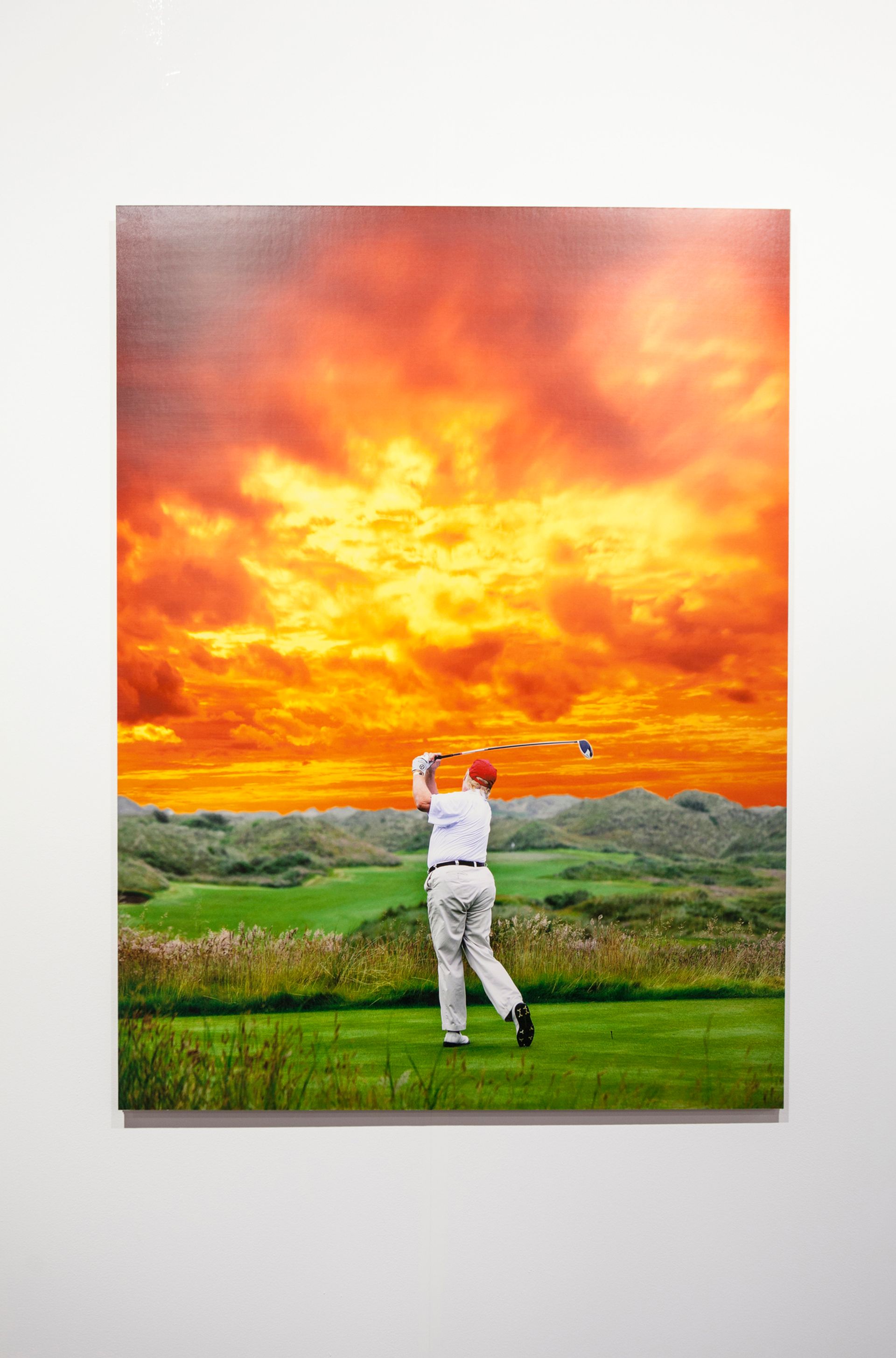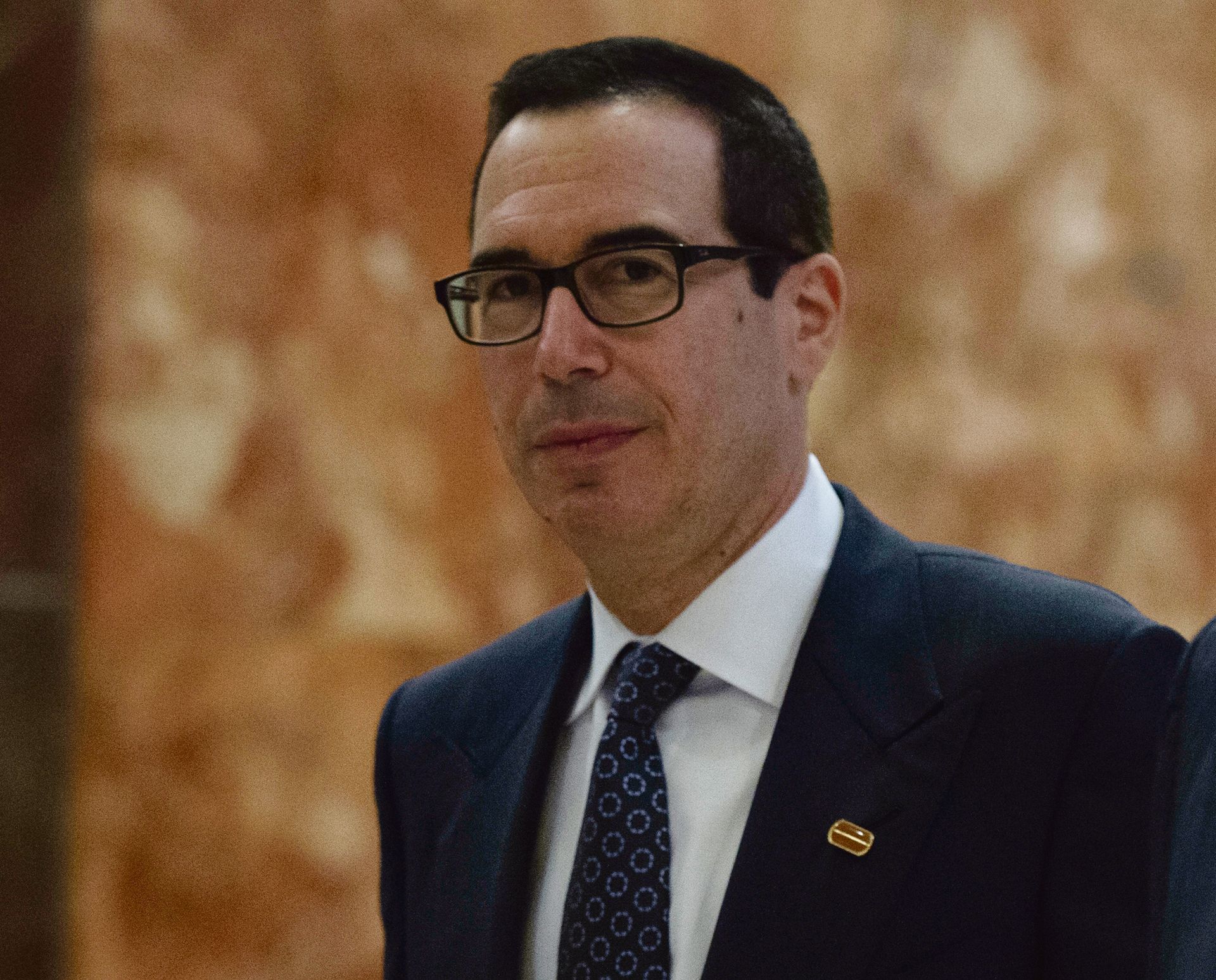The effects of Donald Trump’s shock election to the US presidency may not be fully felt in the art market for several months, but dealers at Art Basel in Miami Beach are taking a pre-emptive approach, filling their stands with overtly political works that respond to the prevailing climate of uncertainty. And despite noticeably thinner crowds at this year’s fair, the strategy appears to be paying off.

Sadie Coles sold Jonathan Horowitz’s photograph featuring Trump playing golf to the New York-based adviser Lisa Schiff for $12,000 on the opening day. Does she have a good body? No. Does she have a fat ass? Absolutely (2016) riffs on a comment that Trump made about the reality TV star Kim Kardashian in 2013.
Political works painted on newspapers by Rirkrit Tiravanija also proved a hit on the first day at the stands of Gavin Brown and Pilar Corrias. Brown sold all three pieces created by the Argentinian-born artist in response to Trump’s victory (priced at $90,000 each). Each work bears the slogan: “The tyranny of common sense has reached its final stage.” The New York dealer says that the works are “more of a comment on the cultural climate than the political climate”.
Corrias sold a work for $130,000 made in the same style: Untitled (do we dream under the same sky/June 25, 2016), painted on pages of the Sun newspaper from the day after the UK referendum on European Union membership. The London dealer says she is in the process of selling other works in the same series.
Portrait mash-ups
Most dealers reported sales to collectors from the Americas, but a German buyer snapped up one of Armin Boehm’s new canvases, created specially for the fair. The Brain Manipulation Conference (2016), priced at €26,000 at the Zurich gallery Peter Kilchmann, depicts mash-ups of political leaders: Trump’s face fused with Hillary Clinton and Vladimir Putin spliced with Bashar Assad. “The collector was specifically looking for a work that documents this moment in time,” Kilchmann says.
Serious subjects
At Leo Xu Projects, the political conversation extends to China’s strict internet censorship laws. The Shanghai dealer sold an installation by the activist aaajiao to a New York collector for $24,000. Gfwlist (2010) continuously prints an encrypted roster of websites. Xu says that collectors are not just plumping for beauty but are “engaging with serious subjects”.
Galerie Gmurzynska, meanwhile, pays homage to the centenary of the Russian Revolution. Organised by the curator Norman Rosenthal, the stand has been designed by Picasso’s son Claude. Several works by Varvara Stepanova, priced between $100,000 and $300,000, were sold on the first day. “Sales have been primarily to European collectors, which is surprising in Miami,” says Mathias Rastorfer, the gallery’s co-owner.
Although Trump’s election could benefit the commercial art world—his win has seen the stock market rally and his proposed tax reforms are expected to benefit high net-worth individuals—trade insiders remain nervous. “It’s not as frantic this year,” says the New York dealer Sean Kelly. “[For works priced] under $250,000, people are happy to make decisions, but over that, they are hesitating.” As another dealer notes: “Major things are selling for relatively major money, but floors are being tested more than ceilings.”
A taxing question

The newly nominated US secretary of the treasury, Steven Mnuchin, did little to allay the fears of dealers and collectors when he revealed some early details for tax plans under president-elect Donald Trump. Mnuchin told CNN on Wednesday that Americans will see “the largest tax change since Reagan”, including fewer deductions for the wealthy.
The New York-based dealer Sean Kelly says that “it will be a real concern for the institutional art world if tax incentives to gift works are removed or amended”, while the American Alliance of Museums says in a statement: “Tax reform has emerged as one of the new administration’s priorities and the president-elect has proposed significant changes to itemised deductions that could significantly reduce charitable giving.”
Mnuchin has implied that tax breaks for donations to charities would remain but others would be capped. There is a precedent: during the Reagan administration, the 1986 Tax Reform Act limited the amount of money that collectors could deduct in exchange for donating works of art.
Additional reporting by Gareth Harris

